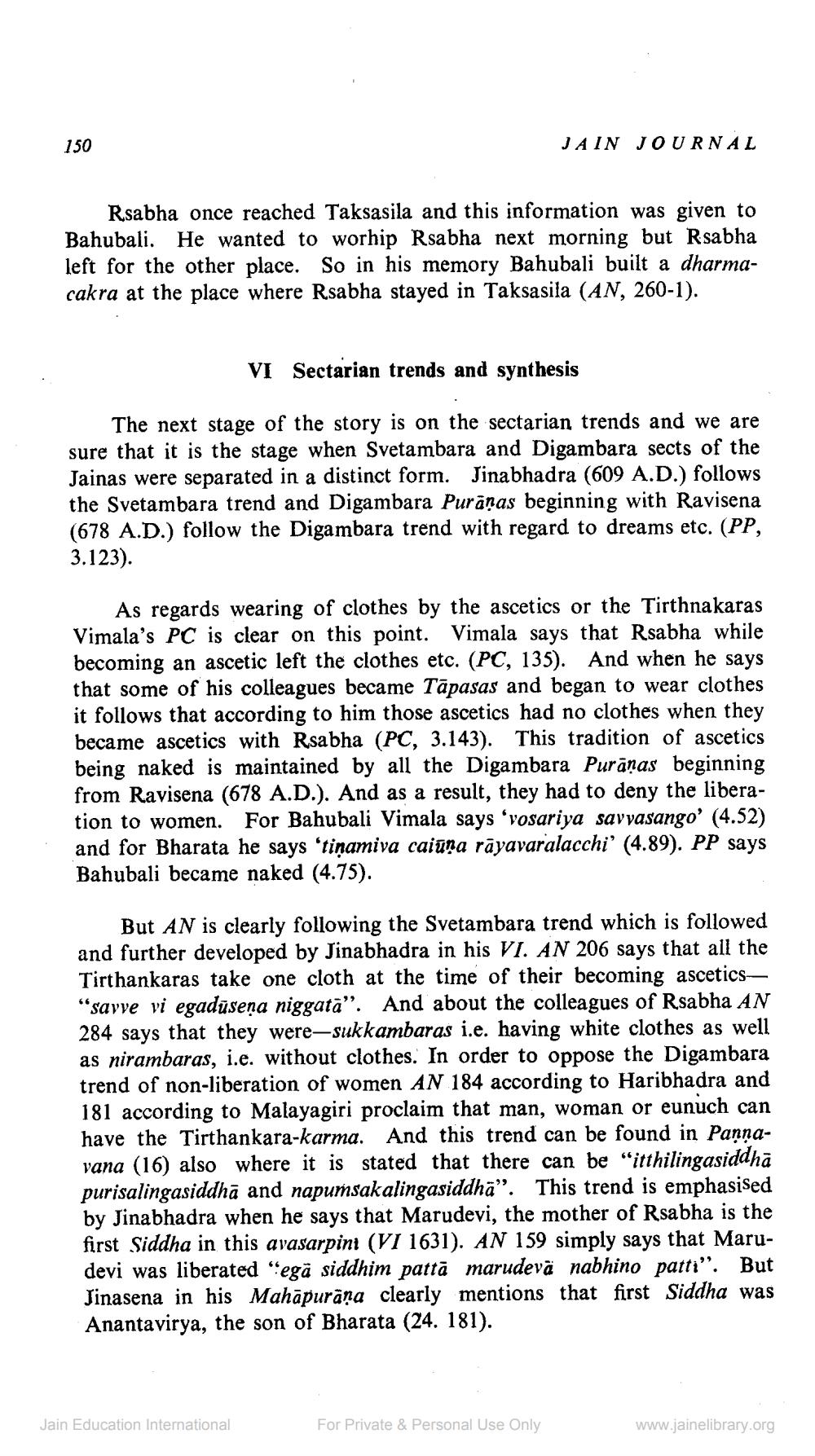________________
150
JAIN JOURNAL
Rsabha once reached Taksasila and this information was given to Bahubali. He wanted to worhip Rsabha next morning but Rsabha left for the other place. So in his memory Bahubali built a dharmacakra at the place where Rsabha stayed in Taksasila (AN, 260-1).
VI Sectarian trends and synthesis
The next stage of the story is on the sectarian trends and we are sure that it is the stage when Svetambara and Digambara sects of the Jainas were separated in a distinct form. Jinabhadra (609 A.D.) follows the Svetambara trend and Digambara Purāņas beginning with Ravisena (678 A.D.) follow the Digambara trend with regard to dreams etc. (PP, 3.123).
As regards wearing of clothes by the ascetics or the Tirthnakaras Vimala's PC is clear on this point. Vimala says that Rsabha while becoming an ascetic left the clothes etc. (PC, 135). And when he says that some of his colleagues became Tāpasas and began to wear clothes it follows that according to him those ascetics had no clothes when they became ascetics with Rsabha (PC, 3.143). This tradition of ascetics being naked is maintained by all the Digambara Purānas beginning from Ravisena (678 A.D.). And as a result, they had to deny the liberation to women. For Bahubali Vimala says 'vosariya savvasango' (4.52) and for Bharata he says 'tiņamiva caiūna rāyavaralacchi' (4.89). PP says Bahubali became naked (4.75).
But AN is clearly following the Svetambara trend which is followed and further developed by Jinabhadra in his VI. AN 206 says that all the Tirthankaras take one cloth at the time of their becoming ascetics"savve vi egadusena niggata". And about the colleagues of Rsabha AN 284 says that they were—sukkambaras i.e. having white clothes as well as nirambaras, i.e. without clothes. In order to oppose the Digambara trend of non-liberation of women AN 184 according to Haribhadra and 181 according to Malayagiri proclaim that man, woman or eunuch can have the Tirthankara-karma. And this trend can be found in Pannavana (16) also where it is stated that there can be "itthilingasiddha purisalingasiddhā and napussakalingasiddhā”. This trend is emphasised by Jinabhadra when he says that Marudevi, the mother of Rsabha is the first Siddha in this avasarpini (VI 1631). AN 159 simply says that Marudevi was liberated "egā siddhim pattā marudevä nabhino patti". But Jinasena in his Mahāpurāņa clearly mentions that first Siddha was Anantavirya, the son of Bharata (24. 181).
Jain Education International
For Private & Personal Use Only
www.jainelibrary.org




